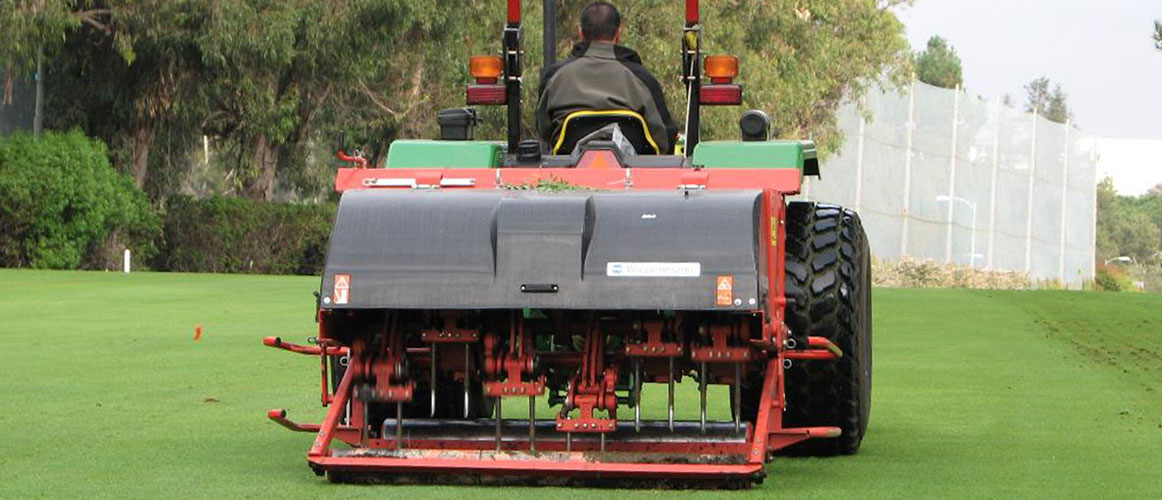Even though conditions are perfect right now at golf courses that overseeded for the winter, March is the time to initiate practices to encourage the gradual transition to bermudagrass. The goal is to wake up the bermudagrass and allow the overseeded perennial ryegrass to gradually fade away heading into summer.
Here are the top three tips for encouraging a smooth transition to bermudagrass in the fairways and rough.
-
Reduce the cutting height and sweep the clippings
Reduce fairway cutting heights to 0.375 inches to 0.400 inches (3/8 inches to 7/16 inches), and bring down the rough to 1 inch or lower to allow more sunlight to reach the underlying bermudagrass. Sweeping and removing the clippings is also very effective at exposing and stimulating bermudagrass stolons and getting rid of the “goo” created by decomposing ryegrass clippings in the turfgrass canopy. -
Solid tine aeration and slicing
Solid tine aeration and slicing help to warm the soil and encourage good water penetration to stimulate bermudagrass growth. There is no need to break out the core aerator and make a big mess. Let the golfers enjoy the excellent spring conditions and save the coring for the summer. -
Maintain balanced soil moisture
The old thinking for spring transition was to “burn out” the overseeded ryegrass by shutting off the water. Experience has shown that shutting off the water actually caused more harm to the bermudagrass than the overseeded perennial ryegrass. It is important to maintain and balance soil moisture during transition time so that bermudagrass will resume active growth and gradually crowd out the overseeded perennial ryegrass.
Looking for answers to specific questions about agronomy? Send me an email - I’m here to help.




